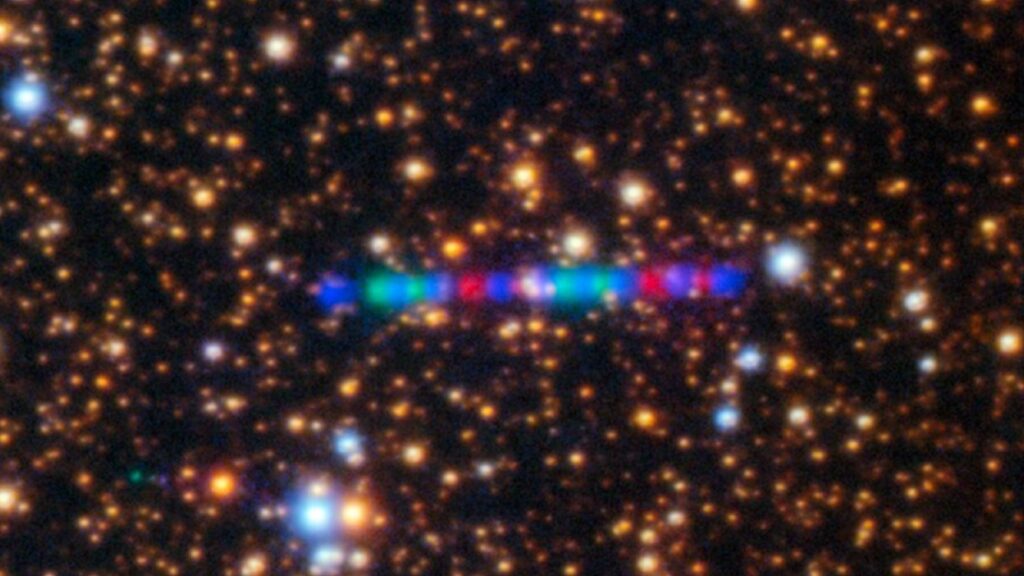
All sorts of crazy things have been suggested regarding 3I/ATLAS, the third known interstellar object that we’ve discovered. Some are simply conspiracy theories about it being an alien spacecraft, while others have been well-thought out suggestions, like using Martian-based probes to observe the comet as it streaked past the red planet.
A new paper pre-published on arXiv and accepted for publication by the Research Notes of the American Astronomical Society by Samuel Grand and Geraint Jones, of the Finnish Meteorological Institute and ESA respectively, falls into the latter category, and suggests utilizing two spacecraft already en route to their separate destinations to potentially detect ions from the object’s spectacular tail that has formed as it approaches the Sun.
A few weeks isn’t a whole lot of time to set up a rapid experiment to run a test that neither spacecraft were designed for. But sometimes science means doing the best with what you have, and in this case, these two spacecraft are our best bet to study the tail of an interstellar comet.
That tail has been consistently growing since the comet’s discovery in early June. Recent reports of its “gushing” water indicate how massive the tail has become, leaving a wake of water particles, but potentially more importantly, ions, behind it. The comet also recently moved out of view from Earth-based systems, though assumedly its tail will continue to grow until it reaches perihelion on October 29th.
As the paper explains, ending up in part of its tail isn’t as simple as passing directly behind it as it moves through the solar system – the solar wind pushes the particles out farther from the Sun, following a curved path away from the comet. The speed at which the wind hits those particles plays a major role in where they would be, and therefore where exactly the spacecraft would have to pass through to collect data on the tail directly.
To make those estimates, the authors used a model called “Tailcatcher” that estimates where the path of the cometary ions will go based on different wind speeds. It then calculated the “minimum miss distance” for a given spacecraft for the central axis of the comet’s tail. Unfortunately, the model is only as accurate as the solar wind data, which typically is only collected definitively ex post facto – and certainly not enough time to help with this potential mission objective.
Even with the best estimates of the program, the two spacecraft would be millions of km away from the central axis – around 8.2 million for Hera and 8 million for Europa Clipper. However, that is still within range of being able to collect data on the ions from the tail directly as they can spread over millions of kilometers from very active comets like 3I/ATLAS.
The downside of this plan is that at least one of the spacecraft – Hera – doesn’t have any instruments that could potentially detect either the ions expected in the tail, nor the magnetic “draping structure” that characterizes what the comet’s atmosphere does to the magnetic field carried by the solar wind. However, Europa Clipper does – it’s plasma instrument and magnetometer are exactly what would be needed to directly detect those ions and magnetic field changes.
Acting on this bit of serendipity is difficult to say the least – but it’s also very time constrained. It’s unclear whether the mission controllers for Hera, or perhaps more importantly, Europa Clipper, will see the message in time to do anything about their potential journey through the coma. But if they do, they might be the first in human history to directly sample and interstellar comet’s tail – and wouldn’t that be something to brag about that had nothing to do with their original intended mission?
The original version of this article was published on Universe Today.
